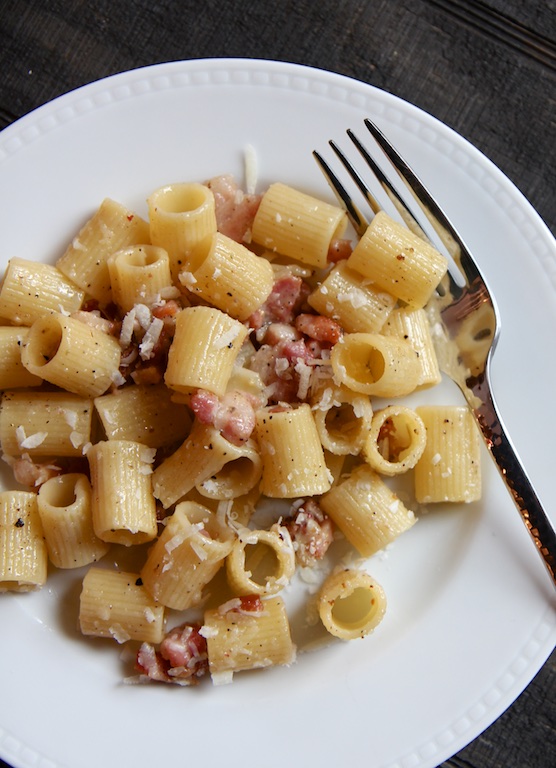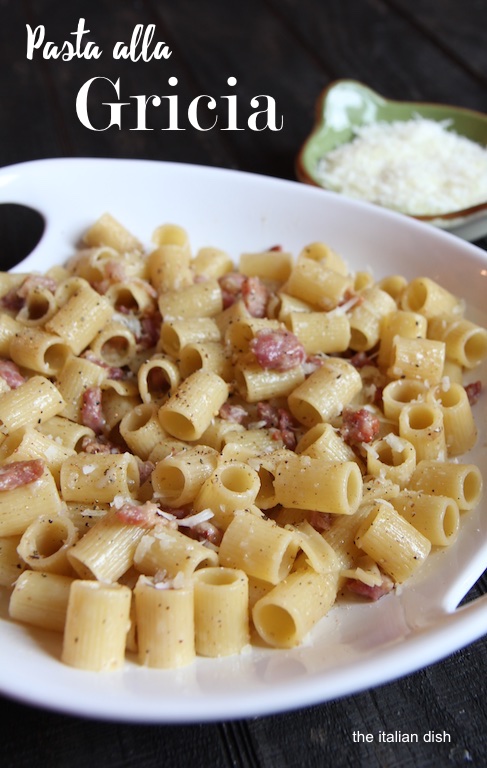
There are a handful of classic Roman pasta dishes that you will find in almost every good trattoria in Rome: Cacio e Pepe, Bucatini all' Amatriciana and Pasta alla Gricia. These dishes are what I like the best - simple to make and with just a few ingredients that you already have in your pantry and can make at the last minute. No fancy recipes here - these recipes are all about technique. This delicious pasta has just four ingredients, but it's essential to prepare it properly.
In Rome, this dish will be made with guanciale, an Italian bacon that is made from the pig's jowl, or cheek. It's an ingredient that most of us will not be able to find, so substituting pancetta, which is Italian bacon made from the pig's belly, is fine. They are very similiar and some people will say they can't tell much of a difference.
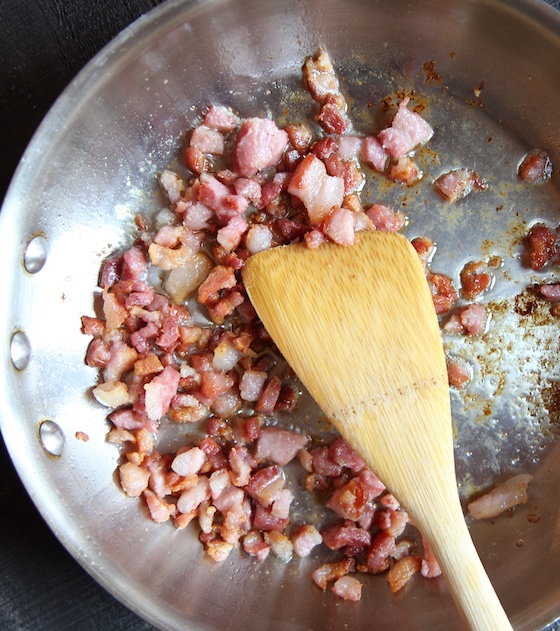
The other major ingredient is Pecorino Romano, which is a sheep's milk cheese. It's a hard cheese, with a bold salty taste and easy to grate. If you have a Whole Foods near you or a good cheese shop, you should be able to buy it. Pecorino and pancetta together make an amazing taste combination.
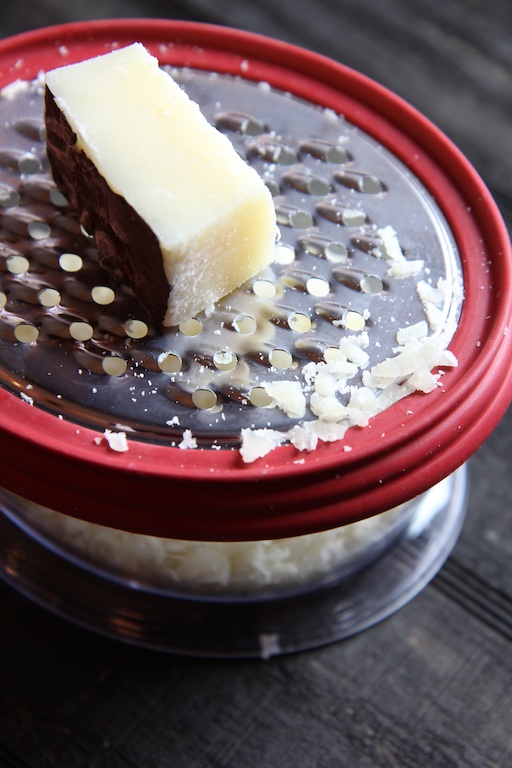
This dish requires that you do not overcook the pasta. In Rome, this dish will be very al dente - to many people, pasta in Rome is firmer than any pasta they've ever had. You should learn to cook it this way, also. Err on the side of cooking it less, not more. For the kind of pasta to use for this dish, use whatever you like, long or short. I used mezzi rigatoni, which is a short rigatoni and one of my very favorite pastas.
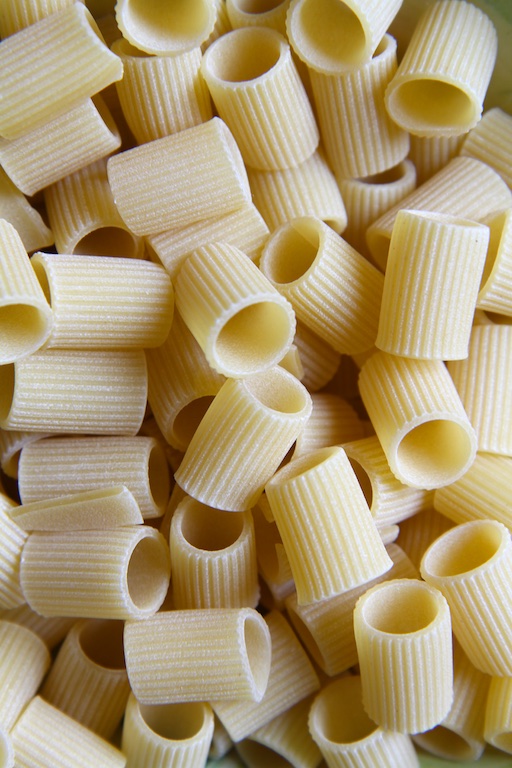
The secret to this dish - like so many pasta dishes - is the pasta water. You cannot make this properly if you drain the pasta and simply toss it with the cheese. The hot pasta water is added to the fat from frying the pancetta and creates a sauce. When the cheese is added, you whisk vigorously to make a creamy sauce and add more hot pasta water if you need it. This dish is not saucy, but somewhat dry. The pasta water simply enables you to make a sauce from the cheese that will cling to the pasta. Don't worry if you don't get it perfectly the first time! Make this dish once a week until you get it right - it's one of the best things you will ever eat.
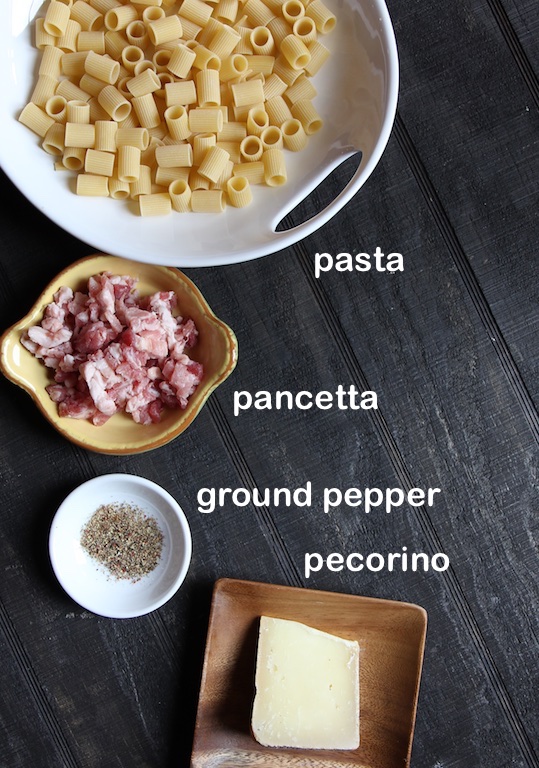
Pasta alla Gricia
for a printable recipe, click here
serves 2 as a main dish or 4 as a side dish
Because of the saltiness of the meat and the cheese, it is not recommended to salt the water for the pasta.
5 ounces guanciale or pancetta, cubed
1½ teaspoons coarsely ground pepper, divided
6 ounces pasta (I used mezzi rigatoni)
¾ cup grated Pecorino Romano cheese, divided, about 2½ ounces (and more for passing)
Start a large pot of water on the stove to boil. At the same time, fry the diced meat in a large fry pan over medium heat until the edges are a bit crispy. Remove meat with a slotted spoon and set aside. Do not wipe out pan.
After the water has come to a boil, cook the pasta until about halfway done - you want the pasta to still be firm (the pasta will continue to cook later in the recipe). If you are using spaghetti, for instance, this will only take a couple of minutes. Add about ¾ cup of the pasta water and the ground pepper to the skillet with the fat from the meat and cook over medium high heat, whisking, to thicken, for about a minute. Remove pasta with a spider, tongs or some other kind of strainer and place in the skillet. Vigorously stir the pasta with the sauce and add more pasta water if it's too dry. Add ½ cup of the cheese and stir, over the medium heat. The cheese will melt into the sauce - add more hot pasta water if you have to. Keep cooking and stirring until the sauce is creamy and the pasta is cooked, but still al dente. Add the guanciale or pancetta and stir to blend.
Transfer to a serving dish, sprinkle with more cheese (and more pepper if you like) and serve. The pasta should be well coated with cheese and pepper, but there shouldn't be a liquid sauce to this dish - if there is, you used too much pasta water.
